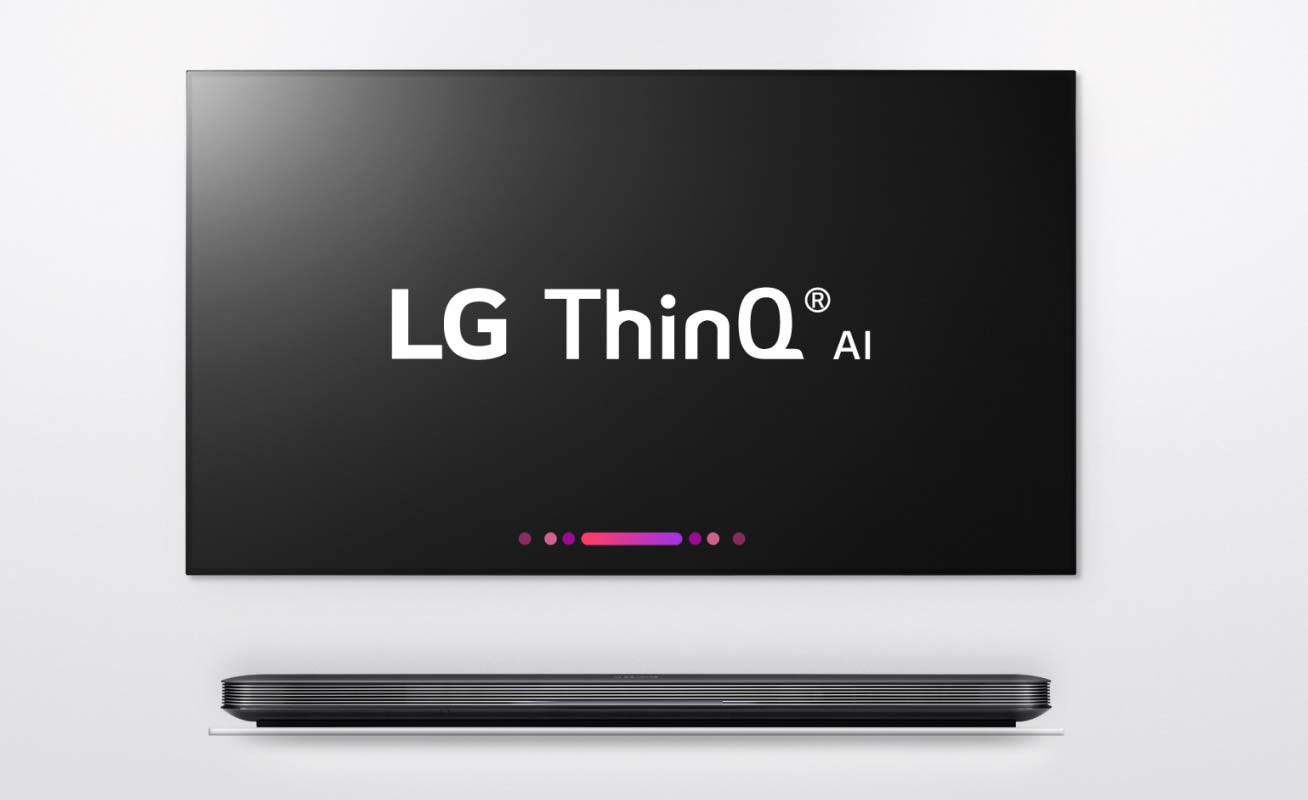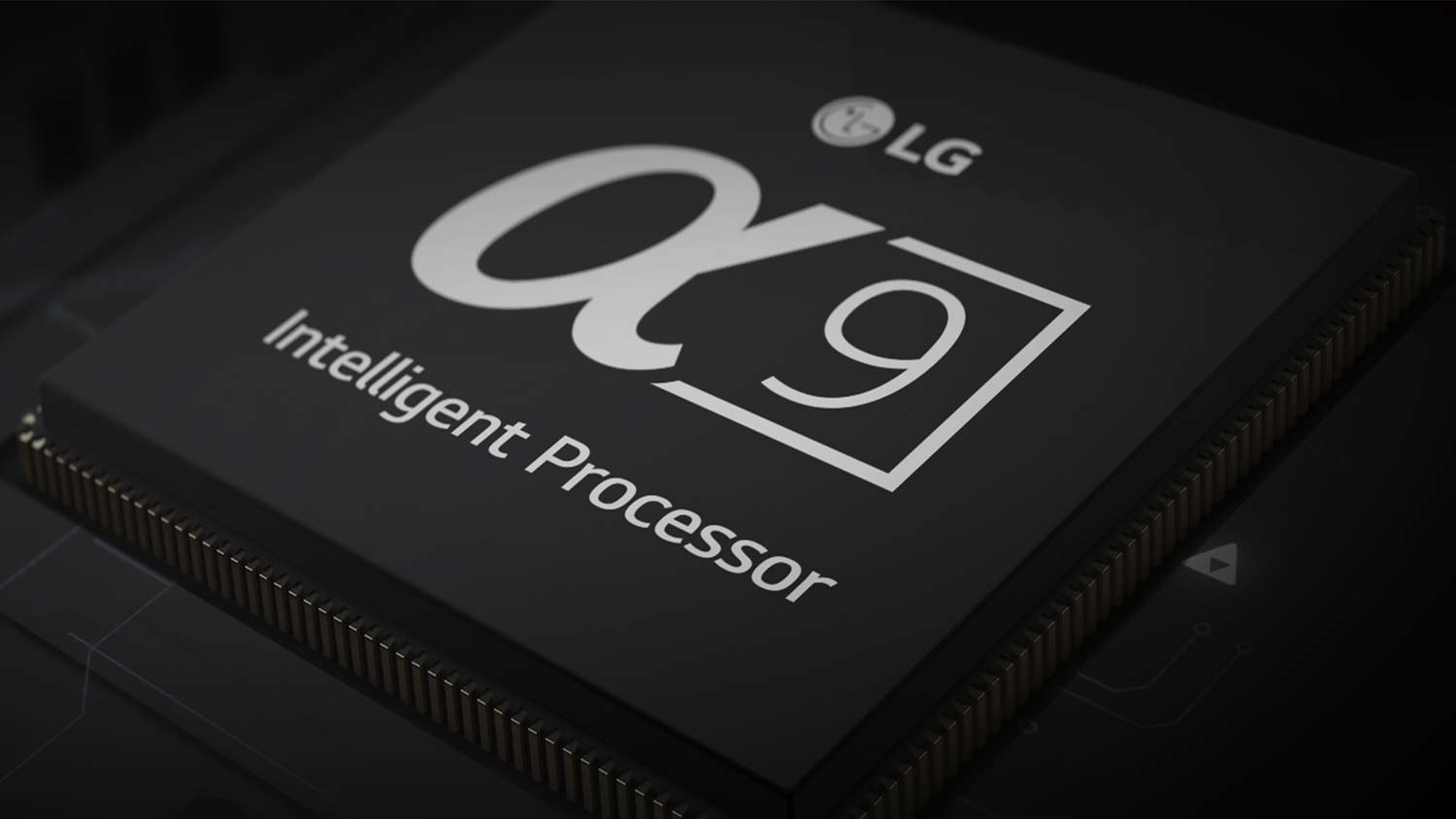LG Unveils AI-Powered Smart TVs with Google Assistant
LG’s 2018 TV lineup gets a boost with a new α9 processor dedicated to artificial intelligence and a revamped webOS powered by Google Assistant.
LG has been a top player in the TV world for sometime, due largely to the company’s industry-leading OLED displays. In just the last year, LG’s E7 OLED earned our top pick for 4K TVs while our 2017 Innovation Award went to ultra-slim LG Wallpaper W7 TV. In 2018, the company looks set to double down on these successes with improvements to both display technology and smart functions in models ranging from entry-level to top of the line.

While many details have yet to be announced – we expect more information at the formal announcement next week at CES 2018 – the news we’ve gotten from LG looks good. In addition to an eye-popping 88-inch 8K OLED, the company announced updates to all of its in-home TV model lines, highlighted by the addition of AI to the lineup.
Putting the AI in Entertainment
LG’s smart TVs are getting smarter with the introduction of ThinQ artificial intelligence, the company’s proprietary technology for voice control, image processing, and more. The voice control capabilities will also integrate with other smart home devices, like robot vacuums, smart lights, and more.

The new technology will be powered by LG’s α9 processor, a quad-core processor that handles both voice controls and media processing. The new chip will also translate into better picture quality, as the processor provides improved noise-reduction, advanced color mapping, and support for new standards like High Frame Rate (HFR) content, Hybrid Log Gamma (HLG) and new HDR standards.
Better Picture Support
The new OLED sets are also getting support for High Frame Rate (HFR) content over broadcast and through streaming services. This new standard is for content mastered at 120 frames per second, eliminating the need for simulated picture data or interpolation for TVs with higher than 60Hz refresh rates. Paired with the 120Hz refresh rates offered on most of LG’s premium sets, the resulting picture should offer even smoother movement, even for fast-paced content like sports.
MORE: Best Smart TVs
The company is expanding its HDR support, continuing support for HDR 10 and Dolby Vision, and adding support for Hybrid Log Gamma (HLG), the emerging standard for HDR in live broadcast content. With these changes comes a new name, switching from Active HDR to 4K Cinema HDR in an attempt to better communicate LG’s distinct HDR offerings.
Sign up to get the BEST of Tom's Guide direct to your inbox.
Get instant access to breaking news, the hottest reviews, great deals and helpful tips.
LG also plans to add support for Technicolor Advanced HDR as it comes to market in 2018. The company has collaborated closely with Technicolor over the last year, with Technicolor choosing LG’s displays as the reference monitors for its own labs, and LG adding a new optimization tool to its sets called Technicolor Expert Mode.
Google Home
The sets will also have a larger place in our connected lives thanks to Google Home. LG’s WebOS is being updated with Google Assistant for voice-activated functions and search, along with a variety of other functions for controlling apps and smart home devices.
The addition of Google Home is a step up from even the latest announcements from competitors like Sony. While some recently announced sets include Google Assistant for voice search and some smart functions – such as setting alarms and browsing the web – LG is taking things a step further, with Google Home built in, offering expanded functionality natively. Some of the functions LG TVs will support include browsing Google Photo, checking traffic on Google Maps and ordering services, whether it’s a ride from Uber or a pizza delivery.
On most of LG’s 2018 systems, this functionality will be built in, with no need for a separate Google Home device. That said, one of LG’s standard FHD TVs — the LK5400 — will also offer Google Assistant, though it will require a separate device, like the Google Home or the Google Home Mini, for full functionality. Other FHD sets will not offer Google Home or WebOS.
WebOS with Google Assistant will be coming to all of LG’s OLED sets, including the entry level B8 line, the mid-range C8 series, the premium E8 series and the ultra-thin Wallpaper W8 series. It will also be included on all of the models in LG’s Super UHD line-up, the SK9500, the SK8500 and the SK8000.
Super UHD
LG’s Super UHD displays – the term for LG’s non-OLED 4K displays – will also see some improvements. These sets use LG’s Nano Cell technology, which fine-tune the traditional LCD display with more accurate color, deeper black levels and wider viewing angles.
While LG’s Super UHD sets have traditionally been edge-lit, top models in the 2018 line will be shifting to full-array backlighting, with more lighting blocks for full array dimming. The sets will also be getting new processing hardware, with the new α (Alpha) 7 processor, the dual-core counterpart to the quad-core α (Alpha) 9.
Audio Sounds Better
While most of the improvements announced by LG are centered around the display and the processing that supports it, LG is also improving the sound with Dolby Atmos.
LG’s premium models already added Dolby Atmos audio support in 2017, making LG the only TV manufacturer to offer Dolby Atmos sound without requiring a soundbar or other external audio device. In the coming year LG will extend that support to several more model lines, including its Super UHD sets, moving away from the Harman-Kardon sound used in past models.
Pricing and availability of the new LG lineup hasn’t been announced yet. We’ll go hands on with the new TVs and features next week during CES 2018.
Brian Westover is currently Lead Analyst, PCs and Hardware at PCMag. Until recently, however, he was Senior Editor at Tom's Guide, where he led the site's TV coverage for several years, reviewing scores of sets and writing about everything from 8K to HDR to HDMI 2.1. He also put his computing knowledge to good use by reviewing many PCs and Mac devices, and also led our router and home networking coverage. Prior to joining Tom's Guide, he wrote for TopTenReviews and PCMag.

